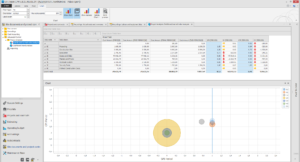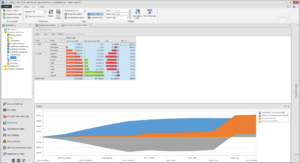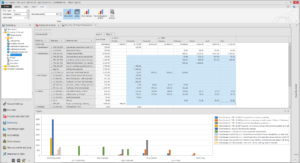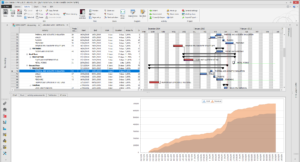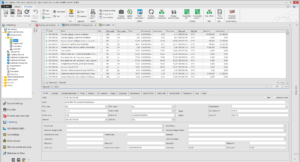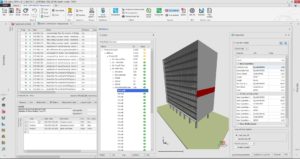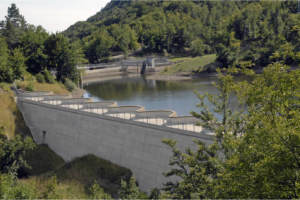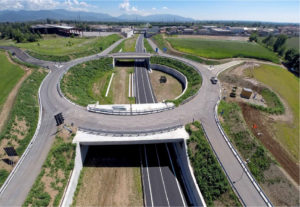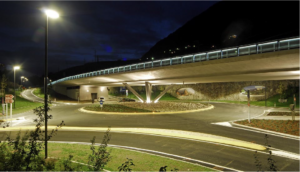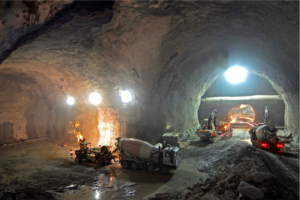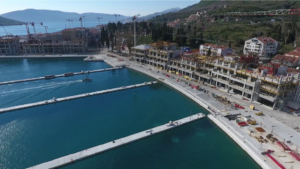Construction Planning AND Execution with STR Vision CPM.
BIM 5D & 4D all in one solution.
If the construction market is one of the main economic segments in the world today, the results of the modernization process that have taken place in the AEC (Architecture, Engineering, and Construction) industry are also significant. The increasing complexity, scope of requirements, and the global dimension of contracts and projects impacts all the players involved, showing a tendency towards organizational and structural strengthening while playing, for the most part, on the ability of the sector to overcome the competitive challenges of the coming years and to respond to the question of modernizing the territory and the cities.
The dynamism dictated by the market sees the emergence of complex competitive models which translate into the need to acquire new organisational skills combined with the traditional ones, and new analysis tools that guarantee accurate and timely data in order to obtain useful information and ensure sustainable business growth. Operational models consolidated by decades of experience are destined to change on a daily basis, while quality and efficiency are the great imperatives that the market demands along with increasingly more complex and urgent interventions and achievements.
In this setting, the ability to strengthen and enhance the culture focused on planning and management control becomes the key, from estimates of the actual versus the planned scenario, to obtain an exact measurement of variances in profit margins compared to forecasts.
Planning and Control
Next to a day-by-day business logic focused on actions, a planning and control process comes into play, based on three main pillars: strategic planning, scheduling and budgeting.
Strategic planning aims to improve the rationality of decisions (or actions) in the systemic and integrated management of the business. A decision is said to be rational when it is consistent with its objectives, above all if it is compatible with the current opportunities, existing constraints and available resources. This must lead to the “creation of value” for the company, in other words the ability to carry out the activities necessary to create a “product” better than competitors, considered valid by all the figures involved, from users to customers, contractors and subcontractors.
Scheduling refers to the organization of all the necessary activities, quantifying and administering the required and available resources to achieve the expected targets or goals. This requires the budgeting of resources, be they financial, instrumental or human. The role of the budget fits into the end-to-end planning, scheduling and control process, assuming the role of the dedicated tool for defining the level of production efficiency and of the company’s competitive ability in the marketplace. For this very reason, it is necessary that the business structures itself and accounts for the value of resources used, continuously comparing the consumption of resources and profits, to gain adequate knowledge and to ensure an efficient management control.
How BIM is Changing the Construction Industry
While Building Information Modeling (BIM) can be defined as an integrated model for construction work which includes all data covering all aspects of its creation, in practice it is a completely new approach to the execution and management of construction work. Here architectural, structural and installation designs, features and properties of materials, components and systems, planning of execution stages, schedules and execution costs, as well as maintenance works are regarded as a whole, as parts of a single process where the entire product life is taken into consideration to reduce mistakes and optimize execution, checking and monitoring.
5D and 4D BIM Software
STR Vision CPM (BIM 5D & 4D Construction Project Management) offers all operators in the construction, plant, and design sectors a flexible software tool designed to generate parametric estimates, calculate quantity takeoffs directly from models, manage and monitor contract and resource costs, plan and schedule work on Gantt Diagrams, virtually simulate the execution of the project using IFC Viewer and support works and control management, thanks to actual versus planned and Earned Value Analysis.
STR Vision CPM is certified by Building SMART International, which guarantees compliance with applicable international standards and ensures the correct importing of IFC data (IFC2x3 ISO/PAS 16739).
The BIM Methodology in Project Management
The BIM methodology makes it possible to integrate a 3D model of the project with information concerning the tools, equipment, human resources and other activities necessary to concretely bring the work to completion. Moreover, technical and economic information is fully managed and kept under control at all stages, both in terms of forecasts as well as final values.
Within the BIM process, STR Vision CPM intervenes in more than one of the phases concerning the design, construction and maintenance of a work. In particular, the most relevant functions available concern the phases relating to the computation, work planning/scheduling, cost analysis and budgeting, and the technical and economic control of the progress of a project/contract.
The BIM Methodology in Project Management
Control Starts from Estimate
- Filling in an estimate and consequently submit a proposal.
- Organizing a time, plan, and schedule, detailing each activity.
- Monitoring and registering unexpected events, price changes, or delays in order to track cost changes that could affect the project in terms of revenue.
Instead of having this unified approach, most software companies in the market see each single activity such as estimate, scheduling, construction cost control and construction accounting as separate and so they develop software which solves one thing at a time, with different goals for different types of software.
In the construction industry, an estimator is the person responsible for compiling estimates of how much a product or service will cost. The estimator’s job involves assessing material, labor, equipment and analyzing different quotes from suppliers and sub-contractors. Estimators might work starting from a bill of quantities, which outline the base requirements of the job, or just a set of drawings from the client.
In essence, estimators are the backbone of a construction company and have the duty to maximize the revenue of the bid.
Estimates from BIM
Given the importance of a construction cost estimator’s job, which directly affects revenue, we developed STR Vision CPM to enable them to perform well, and to get things on their radar faster. The introduction of BIM concepts has led the estimation to be more comprehensive and visual with the ability to quickly control objects that still need to be estimated. The technology available and CPM visual engine allow you to make the quantity takeoff directly from the 3D drawing model created as an IFC file. This file contains the properties you need in order to estimate single objects managing a huge variety of complexity as it could not have been possible to do until today.
However, this is not all. Our advanced features allow you to do more, for example: if you have already calculated an estimate from a 3D model, but the model has been redesigned with changes, you could easily import the new 3D model and decide which changes you accept or not in order to calculate a new estimate.
Conclusion
In the application of BIM, cost and time planning draws heavily on the Project/Program management methodology and, in particular, on the knowledge areas for managing time, costs, risks, communications, integration and reserves.
Building information modeling, with its information management system, is essentially devoted to the collaboration of all designers interested in design and safety, with a decisive and positive impact on two thematic areas of project management: integration and communication. Recall that the project manager passes 70% of his or her time dedicated to the project to communicate. Having a model of the design with all its information allows us to identify the possible risks in the execution phase of the work, as well as assess the impact and probability of occurrence.
Thus, the BIM model starts to bring the construction world closer and closer to Industry 4.0 (the current trend of automation and data exchange in manufacturing technologies) because, albeit virtual, the product (design) represents a real industrial digital prototype which allows us to get more accuracy and control in managing projects and their execution.



